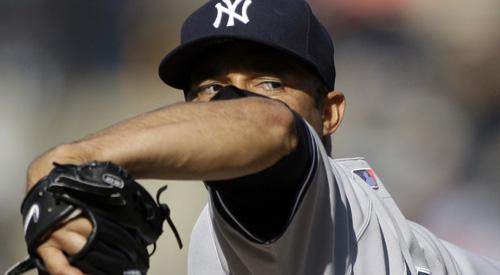
How do you spell relief?
A closer is generally considered to be the best relief pitcher on the team – the ace of the bullpen, if you will – but if you look around the league, you’ll find more than a handful of teams who have secondary relievers that are just as good, if not better than the current closer.
This presents a paradox. If the best relief pitcher is supposed to be the closer, why do so many teams have this “setup man”?
The setup man is very similar to the closer in that he usually pitches only in tight situations with “the game on the line”. He’ll pitch most often in the eighth, but if the situation calls for it (that is, the rest of the bullpen isn’t getting the job done), he may pitch in the seventh. The setup man may face any part of the lineup, from top to bottom. Generally, he is a closer who doesn’t finish the game.
But if there are so many setup men who are posting better numbers than the all-important closer, why aren’t they promoted?
Essentially, with so many good, young relievers that just don’t have the experience, they generally lack the seniority to earn the respect of their club (let alone the big bucks) that comes with a closer role.
There are typically only three ways that a setup man becomes a closer. The first is often temporary, when a team’s closing pitcher goes on the disabled list for some time, the next pitcher in line steps in to fill his shoes for the few weeks or months, and often will return to his setup role once the top dog returns.
This was the case in Toronto this year. Perennial disabled list occupant B.J. Ryan has been the on-again, off-again closer for the Blue Jays for the last three seasons. After a shaky spring, he found his way onto the DL by mid-April, where the Jays promoted setup guy Scott Downs, whose numbers have been tremendously better than the 33-year old Ryan (except for saves, of course).
[php snippet=1]
Downs is just the latest in a list of Toronto relievers who have spent time filling in for Ryan, but the surprising difference in 2009 was the recent announcement by the Blue Jays that Downs will remain as the closer when Ryan returns to the Jays tonight, a move not common in this situation.
The next situation is when a team has a closer, but loses him for whatever reason; whether it be to free agency, trade, or whatever.
Back in 1996, the New York Yankees found themselves in this situation. Closer John Wetteland was an all-star who lead the American League in saves, but was being outperformed by a second-year pitcher named Mariano Rivera whose numbers as the setup man were nothing short of dominating.
After Rivera set the record for strikeouts by a reliever with 130 and finished third in American League Cy Young voting (a distant third, however), the Yankees chose not to resign Wetteland and instead offered the closer role to Rivera. The rest, as they say, is history.
The final situation is when a team has a vacancy in their closer position and goes outside the organization to fill it. George Sherrill is this man for the Baltimore Orioles, who acquired him from the Seattle Mariners where he was acting as setup man to J.J. Putz. In February 2008, Sherill was traded to Baltimore with four other players for Erik Bedard. Sherill was named closer for the O’s the following month, and went on to represent Baltimore in the 2008 All-Star Game.
Good relief pitchers tend to be loved by hometown fans, but are unknowns outside their club’s market. Poor relievers find themselves unemployed or demoted before they realize what happened.
The fact is that relief pitchers have to earn their place on a team much more than a position player. With roughly one-quarter of the league being relief pitchers, the competition for jobs is incredible. A position player can have a career year during a contract year and find any number of teams willing to pay eight, maybe even nine figures, while a middle reliever will rarely top the seven digit mark.
One of the reasons why relievers get little respect, frankly, is because there are so many of them. The problem with that is that it’s necessary. Teams go through pitching like it’s on sale and really, it is. Relief pitchers make among the lowest numbers outside of rookies in the game, despite being such a valued commodity.
The “hold” statistic was invented in 1986 as a way to measure the effectiveness of a relief pitcher, awarding “holds” under the exact same conditions as a save, minus the fact that the pitcher isn’t actually on the mound when the game ends. This sorry stat barely even makes an impact. If a pitcher loses the lead, he is credited with a “blown save,” not a “blown hold.”
Relief pitchers deserve more respect. Being among the most unpredictably used players on a team – who knows when they’ll pitch, how often, and or even how long – their versatility goes almost unrewarded, yet a good middle reliever may turn into a great starting pitcher (Joba Chamberlain?) or an iconic closer (Trevor Hoffman?).
Teams usually carry seven or eight relievers, from right-handed fireballers to left-handed specialists, to the setup men and closers and everything in between. Any of them have the ability to impact a team’s success.
So the next time you see a no-name reliever rushing in from the bullpen, take a second look. You might find some value you may not have noticed before.
[php snippet=1]

